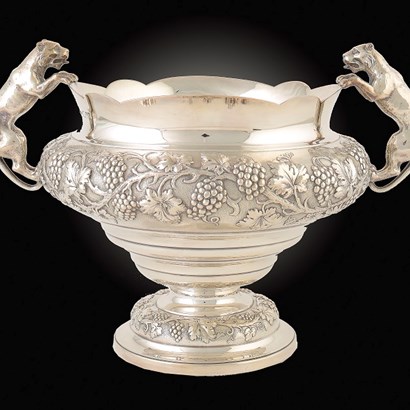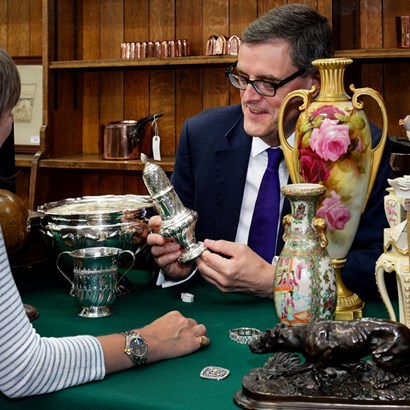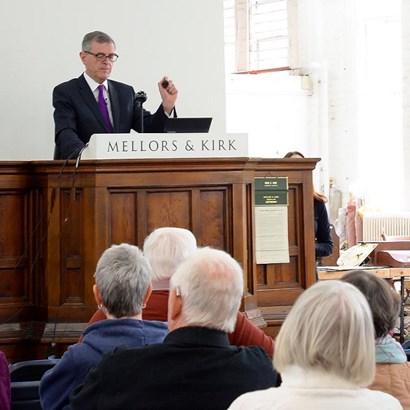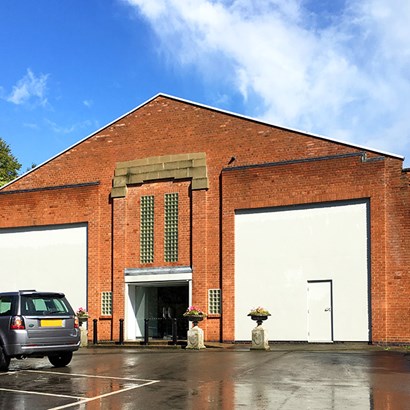Auction Insights
Scenes of Everyday Life in Nottingham
Just why a local man chose to record scenes of everyday life in Nottingham in the 1880s we shall never know, but the photographs he left behind are invaluable.
That they survived at all is remarkable since they were discovered a few years ago in the outhouse into which they had been put a hundred years earlier. The amateur photographer, William Francis Palmer combined the rolls of chemist and sub-postmaster.
The fragile glass negatives are still in three stout deal boxes which have protected them for 130 years recently arrived at The Auction House. As soon as I put them on the light box the busy streets of Nottingham complete with modern trams (horse drawn, of course) familiar and not so familiar landmarks and long demolished streets, all came vividly to life. I only intended to make a brief assessment of them but they were so interesting that I did not notice the time until two hours later!
These bygone images prove just as now people pass to and fro in front of St Peter’s Church, others show the grand portico of the Theatre Royal is partly hidden by hansom cabs plying their trade, but all the surrounding buildings have long gone, children play in only recently abandoned cave dwellings and there is a great shot of St Andrew’s Church towering above two magnificent trams. Social historians will be particularly interested in a number of the images, including Nottingham’s unique Tradesmen’s Mart with its galleried dwellings above. Palmer’s chemist’s shop in Northumberland Street and its wonderful interior (I particularly like the sign ‘Dispensing Department’) are to be seen, the beautifully manicured gardens of the arboretum, the Chinese bell and many other evocative scenes.
The glass negatives are of half plate format (12 x 16cm). In those days photographic exposure times were much longer. The resolving power of the chunky brass camera lenses and speed of the light sensitive photograph emulsion on the glass plates was much slower, even on a bright day requiring several seconds. This is the reason why in groups of people and animals some of the figures appear eerie, almost ghostly, simply because they didn’t stand still. Its easy to see how such early attempts at capturing real life played into the unshakable belief of many at that time in spiritualism, with some photographers capturing or really cleverly faking photographs of fairies. Lewis Carroll (Rev. Charles Lutwidge Dodgson, 1832-98) author of Alice in Wonderland, was also a keen photographer and photographic societies and clubs flourished all over England. They attracted everyone from respectable tradesmen such as Palmer, gentlemen like Lewis Carroll and several aristocrats, something so characteristic of Victorian Britain.
The craze for photography can be said to date from Palmer’s time because that was when the photographic dry plate became widely available. Before then the photographer had to take with him a portable darkroom and all the paraphernalia and chemicals that involved.
He would also have been a subject of interest to passers-by, setting up his large and unwieldy mahogany and brass camera on its cumbersome heavy tripod, then diving under a black cloth to focus the image on the ground glass screen, inserting the plate holder, pulling out the dark slide and finally making the exposure, before dismantling it all and heading home to his dark room.
‘Slow photography’ such as this could result in images possessed of a wonderful naturalness, a profound sensitivity that elevates such photographs into works of art. The shortcomings evident in the equipment or materials will sometimes be quite marked, but it is easy to be critical when a less than perfect digital image can be instantly deleted and reshot.
Nineteenth century photography is a particularly rewarding field of study. I shall never forget discovering, amongst a stack of worthless pictures and prints cleared from the attics of a country house, a remarkable photograph of a girl. I instantly recognised it as the work of Julia Margaret Cameron (1815-1879). In a frame, the glass of which was splattered with bird lime, it had somehow survived in pristine, unfaded condition. It was sold at Mellors & Kirk for £30,000.
William Palmer was born in Leicester in 1845. In the 1891 Census he is listed as living with his wife Mary, son Algernon, two daughters, Sybil and Dorothy and one servant, 17 year old Emma Roberts, a ‘General Domestic’. His chemists shop was on the corner of Northumberland Street and Union Road and when he died in 1925 he left an estate of £665 2s 5d. Dorothy later took over the shop and post office which she ran until 1964. The streets were demolished when St Anns was redeveloped in the early 1970s.
Several of Palmer’s photographs were illustrated in Then and Now, Nottingham Volume II compiled by the late Douglas Whitworth and the collection will go under the hammer at The Auction House in September with an estimate of £500-700.
< Back to Auction Insights



